 Photo by Irina Zadov
Photo by Irina ZadovThe Chicago artists and educators behind the “small is all” program talk about what grounds them in the city.
In August 2020, artists Irina Zadov, Abena Motaboli and Peregrine Bermas met in a community garden in Chicago’s Englewood neighborhood. The Chicago Park District teaching artists and their students had been struggling during the pandemic, with many art spaces shutting down and classes moving online, and the artists had gathered in Earl’s Garden Mae’s Kitchen to give back as part of the Teaching Artist Mutual Aid program.
Want to receive stories like this in your inbox every week?
Sign up for our free newsletter.

As they worked amid the beets and collard greens, they discussed artists’ relationships with the land and life around them.
“A lot of times, attention in the art world is given to works that are large and environmentally destructive, like the cis, white man-dominated land art movement,” said Zadov, a senior program specialist at the park district. “But the work of weeding and mulching and paying attention to the living beings around us is just as important as more monumental artworks.”
The trio, along with fellow artist Gabriela Garay, decided to make that idea the basis of their next class, “small is all.” In the eight-week program merging art with racial and environmental justice, students connect with nature through birdwatching and hikes and flex their creative muscles. Drawing on the work of Black liberation writer adrienne maree brown and Potawatomi ecologist Robin Wall Kimmerer, the course aims to “transform the harm that was done to Indigenous People, plants, animals, and sacred relationships through genocide, colonization, cultural and environmental degradation by restoring the relationship between this land and its Indigenous People.”
The course takes its name from a line in brown’s “Emergent Strategy” book: “Small is good, small is all (The large is a reflection of the small).” In each class, 20 young people ages 10 to 15 select a “small” — a plant, animal or living being — to observe and reflect on for the three months. The exercise is meant to restore their relationship with the land, plants and animals during a time of Zoom fatigue and social media overload.
Now the artists are sharing their “small is all” curriculum with youth workers and educators across the country. Ahead of their virtual curriculum launch on Thursday, the artists told Borderless Magazine what grounds them in Chicago, a question explored in the course through discussions about migration, colonization, racial and environmental justice.

Irina Zadov
What grounds me is my connection to land. In my home country of Belarus, forests were my sacred space of belonging. Birches, pines, wild mushrooms and squirrels were some of my first and best friends. Learning about Indigenous plants of the Midwest has been deeply grounding. It’s a delight to discover that some of my plantcestors from across the ocean are also Indigenous to the Great Lakes, including cedar, birch, juniper, cattails, moss, yarrow and dandelion.
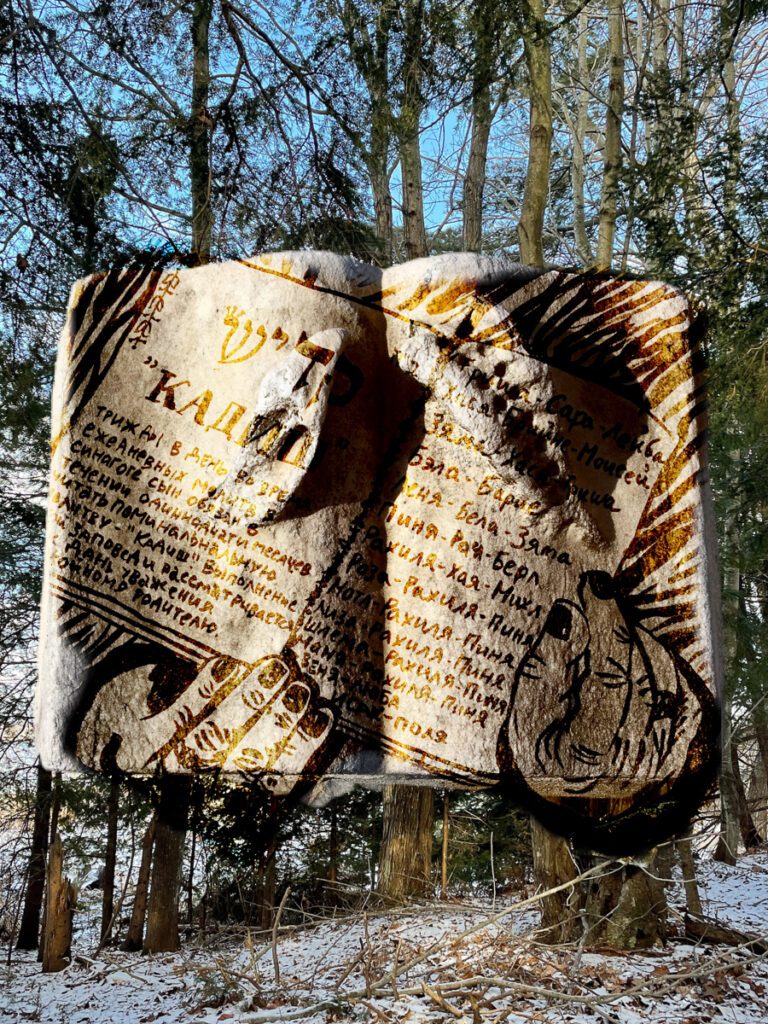
I also know that both lands hold memories of trauma, genocide and forced displacement. When I visit Belarus, I am walking on the unmarked graves of my Jewish ancestors, whose names and stories I continue to learn. When I walk in Illinois, I honor the Three Fires Confederacy: Ojibwe, Odawa and Potawatomi; and also the Myaamia, Inoka, Ho-Chunk and Menominee peoples. I am humbled to be a guest on this land. As an immigrant and a settler, I am committed to living my values of solidarity, reciprocity and reparations.
Read More of Our Coverage
I also feel deeply held within my relationships to Chicago’s artists and organizer communities. Memories of painting murals on viaducts, curating pop-up performances in homes and back alleys, pulling weeds and sharing meals in community gardens and supporting the leadership of BIPOC organizers in the streets … I find a sense of belonging in these moments of collective action, co-creation and relationships rooted in liberation and healing.
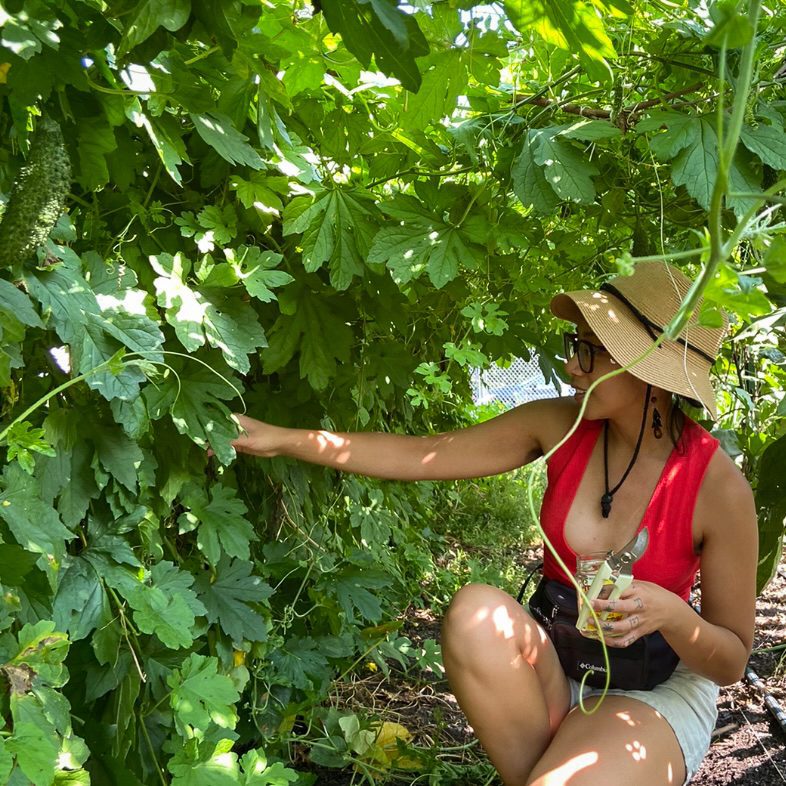
Peregrine Bermas
At the risk of sounding cheesy, what grounds me in Chicago is the love. It’s taken almost 30 years in Chicago to piece together and cherish my story here. I’ve been reflecting on this because my birthday is coming up. My parents immigrated here in the 1980s and ‘90s from what are known as the Philippine Islands. They had a house in West Lakeview, where I lived with one set of grandparents, and then walked across the street to go to daycare hosted by another set of grandparents. My parents owned a brick-and-mortar shop, which never fails to give me pause at the god in change. The summers were golden and the winters were hardcore, unlike winters now.
After we were displaced from that home, I remember constant movement that unsettled my sense of community and connection to place, even though we never moved far. I used to be too ashamed to voice my own Chicago stories, which are fragmented, nonlinear and poetic memories that I have now come to appreciate. Committing to healing my story here meant redefining many of these terms for myself (community, connection, home).
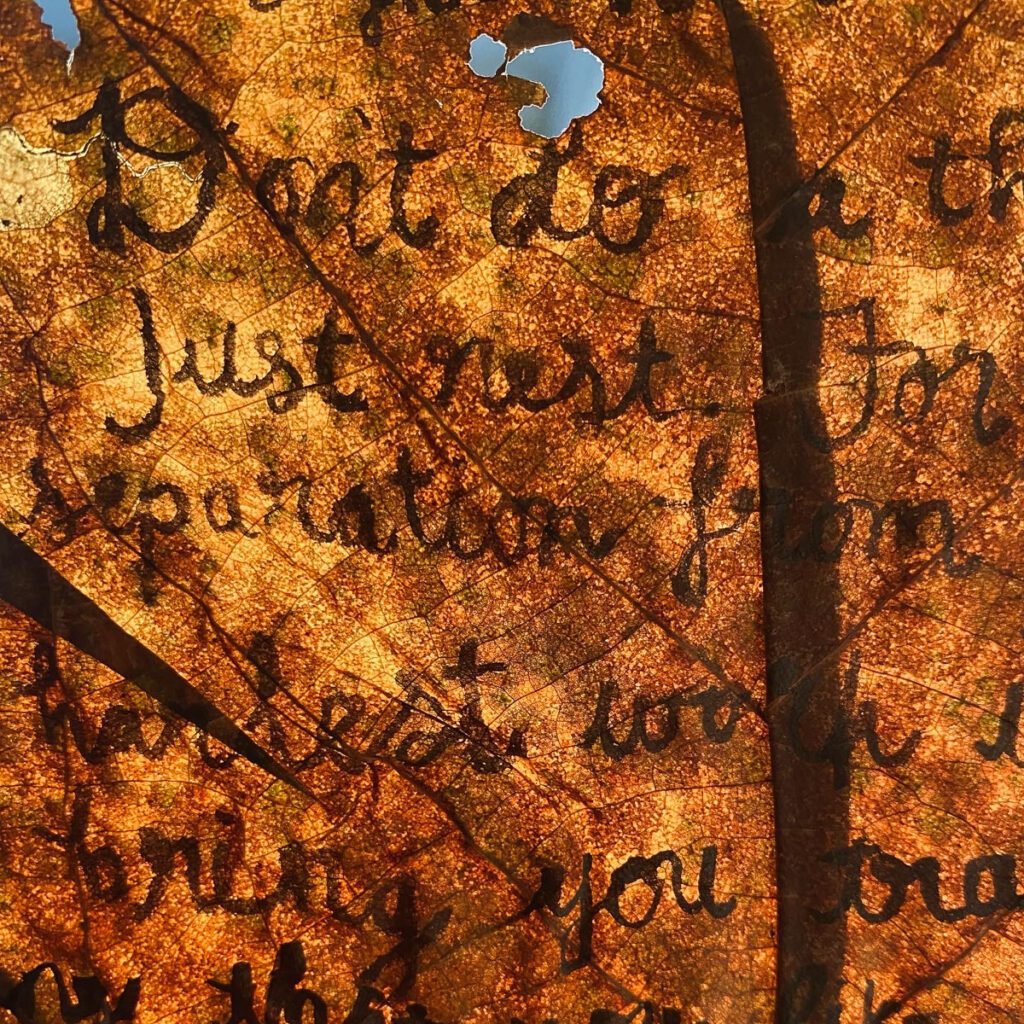
Fortunately, flocking in one place eventually gathers your people, and I have gathered a beautiful bunch (of all species!) to my heart and awareness. We flock until we learn how to nurture and protect each other. The ways our stories weave around each other and the ancestral echo of our demonstrated collective fortitude makes me curious and inspires me to be brave.
The connection I feel to Chicago is in this call and response, and also the living memory and the grief of change that’s held palpably in a place. I was touched to learn that some of my friends grew up on the block where my dad first ate lunch after immigrating here, and touched to sit with a cottonwood tree and know they are probably younger than 300 years old because of widespread clearcutting, and touched to hear a young person in a workshop say her grandmother makes a pot of steam medicine the same way my grandmother and mother taught me. Chicago is the soil that grew me, and I hope to reciprocate the gift.
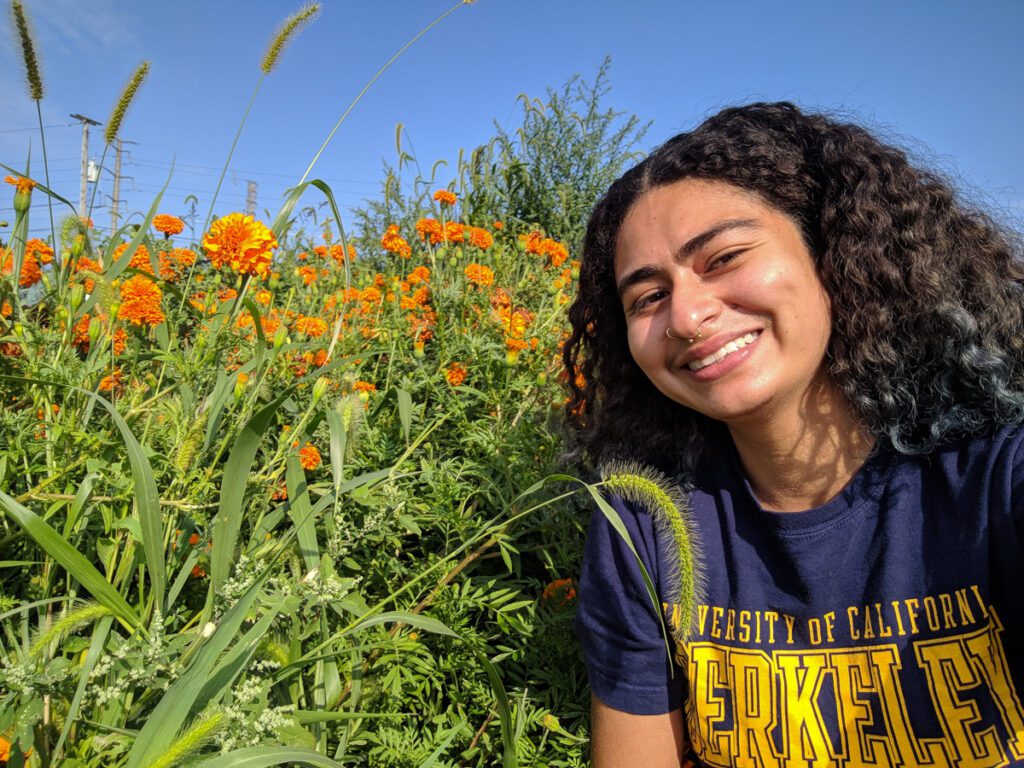
Gabriela Garay
As the child of immigrants, it feels so special to be able to say that I am from here in the land known as Illinois. All the places I have lived still exist and are about four hours away from each other, and this is something I know many people cannot say. I am the first of my siblings to be born on this land and am honored to have lived my whole life here, in these rural, urban and suburban landscapes and surrounded by many of the same plants and animals. But it is now as an adult that I am learning their names and recognizing them everywhere I go. As my relationship to this land has grown, so has my desire to honor and protect it.

I have lived in Chicago for about four and a half years, and what grounds me here really is the small. Especially through the pandemic I’ve often felt like my relationship to the Land and its non-human life has felt the safest, least complicated and most present. Each season I have been able to notice something different about the land and landscape of this city that has often felt old and new at the same time — though some of it is a new remembering. In this long pandemic season, this has felt so grounding and comforting. The relationships have changed and grown each season, but currently it is being able to say hello to the lake, goldenrods, oak trees, catfish, pokeberry and squirrels that has given me a sense of home and place. Seeing these plants has also reminded me of the times and places they have shown up in my life even when I was not as aware of their presence. It is sweet to now realize they have always been constant.
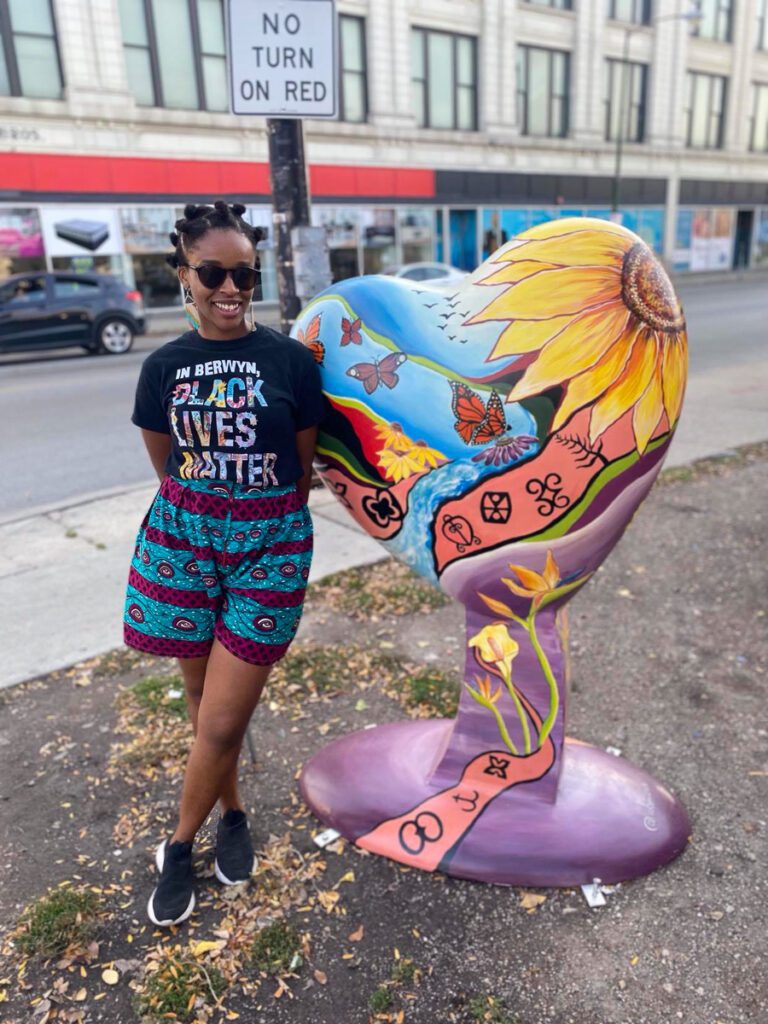
Abena Motaboli
I am intrigued with the idea of home. My family and I immigrated from Lesotho, Southern Africa to the U.S. in 2012; my mother is of Ghanian and Togolese heritage and my father of Basotho and Ndebele heritage.
When I think of my place in Chicago now, I think back to how connected I felt growing up in a mountainous country where there was nature and a love of the environment all around. When we moved to Illinois, I found myself looking for something to connect to through my art practice, making objects out of found material, dirt, tea, coffee, the earth and ephemera to connect to something that has always been around me. Of late I’ve been thinking about soil and connection to land as a way to ground myself wherever I go: the soil was the first thing my feet touched, it is with me now, and will be there when I return to earth. The literal grounds of Chicago ground me here.
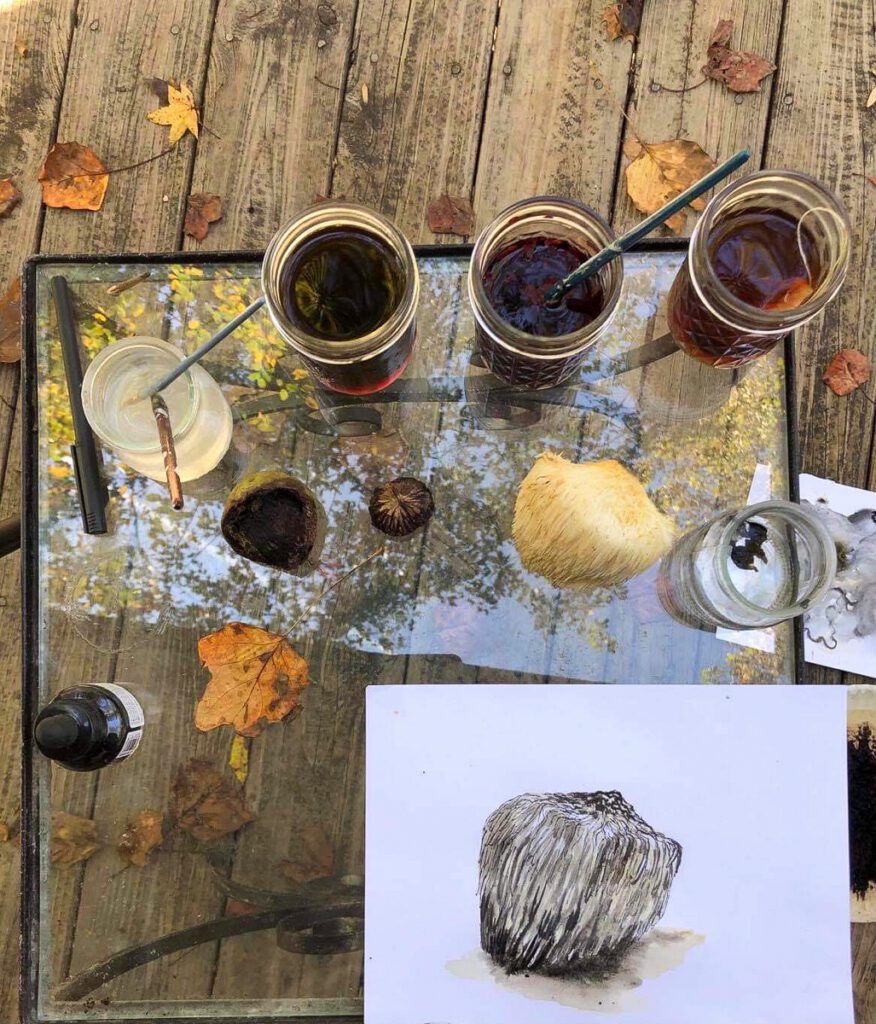
Over the past few years I’ve been learning more about Indigenous land practices and Indigenous peoples in this country. I feel a strong connection to the importance of reciprocal relationships with the earth and all its living beings, as this is how my ancestors have lived for centuries. I think back to the practices of my relatives in a small village town, and I see the love of this place we call home, our connection to water, land, animals and plants.
Something else I carry with me is the word “Ubuntu,” which in South Africa translates to a certain togetherness with a huge emphasis on interdependence, community and understanding together — no one gets left behind. Chicago is a place where for the last seven years I have found my Ubuntu in the work that I do, and that is eternally grounding.
The artists behind “small is all” are hosting a curriculum share on Thursday, December 2 from 5 p.m. to 6:30 p.m. CST. Register here.
The next “small is all” class run by the Chicago Park District will begin in February. Register for this virtual class here.

Bring power to immigrant voices!
Our work is made possible thanks to donations from people like you. Support high-quality reporting by making a tax-deductible donation today.
